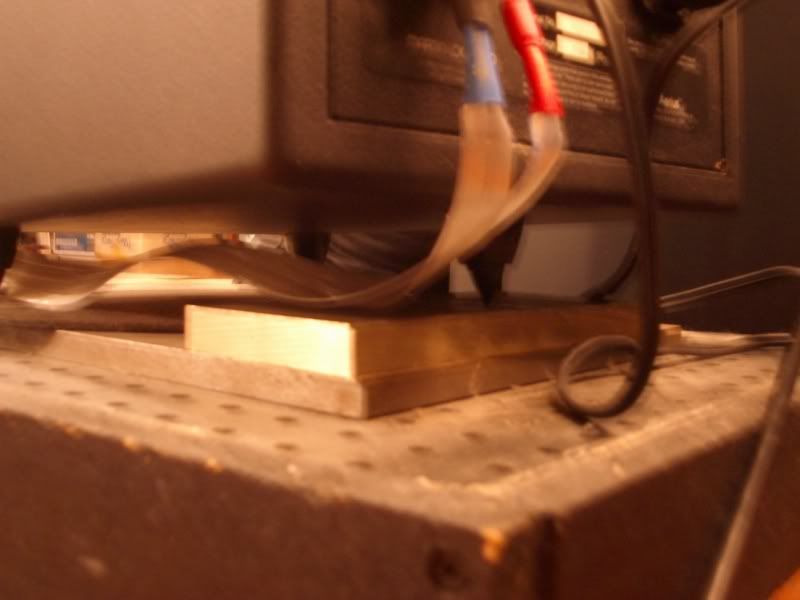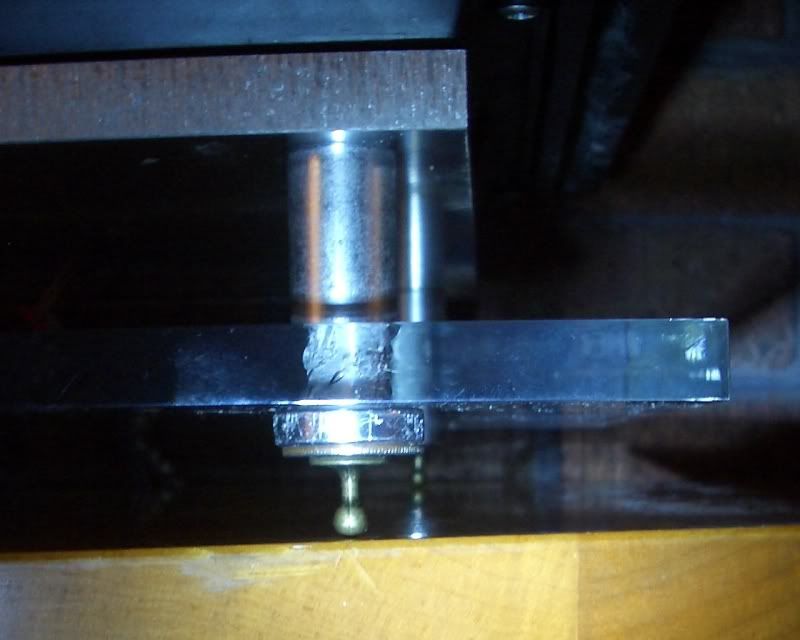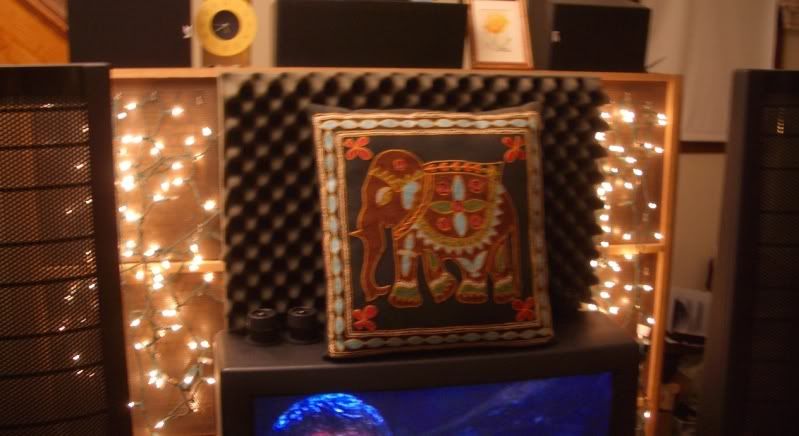Simple turntable modifications done so far to an old belt drive Dual plastic body model.
1. Replace the belt with new original stock replacement
2. Hot wire RCA jacks out the back for lead wire upgrade
3. Sorbogel mat by Audioquest
4. Duct Seal (like clay, stays soft) on underside of platter and inside of hollow plinth.
5. Aluminum plate and acrylic plate with aluminum picture posts as legs.
I've already posted most of these mods in the Analog section. However the last one (#5) is a real DIY so I'm posting it here.
Start with $6 Picture Post from Lowes
http://www.lowes.com/lowes/lkn?action=productDetail&productId=264592-37672-121062&lpage=none

Then a $22 sheet of aluminum plate screwed into bottom of TT.

Add the acrylic ($40, have a shop drill the holes - wish I did)
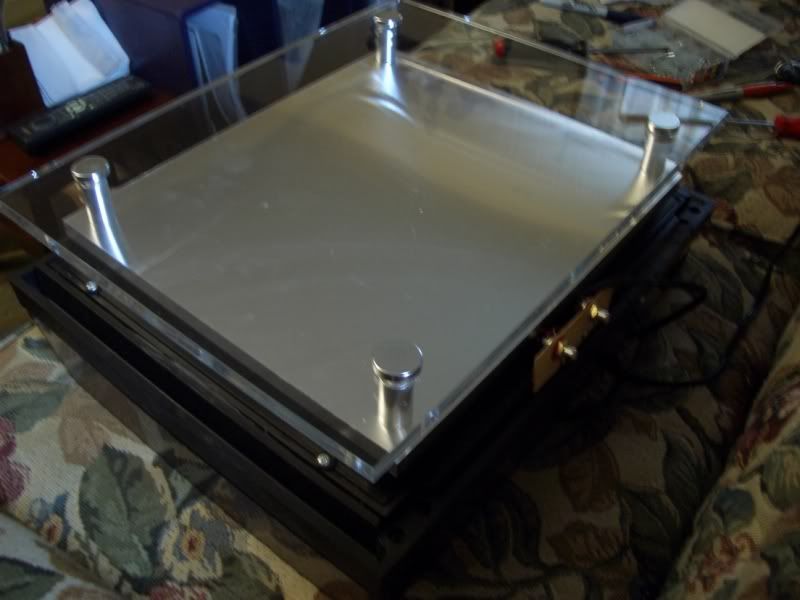
Repair bad solder joint on RCA (if problems caused by flipping unit occur)

It's no Oracle Audio Delphi, but the soundstage is improved, the bass is solid/deep, and dynamic impact & clarity is set at a new level.
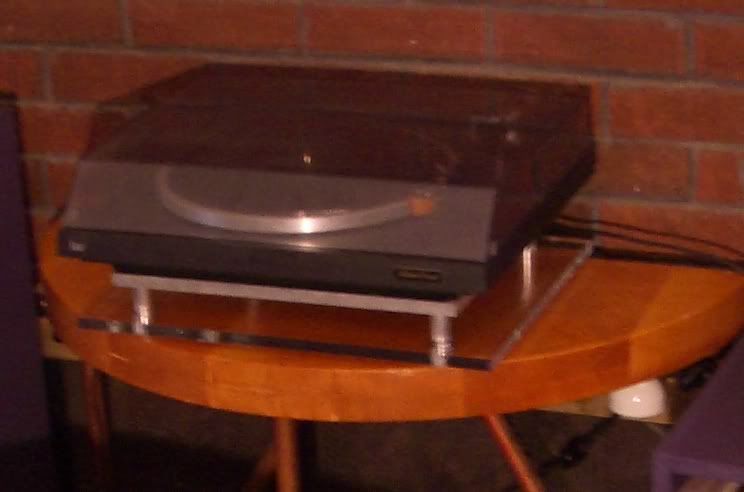
EDIT / NOTE: Original TT weight was somewhere less than five pounds if memory serves. Current weight is 31.3 lbs.
I cut off the original squishy rubber feet to do this modification.
1. Replace the belt with new original stock replacement
2. Hot wire RCA jacks out the back for lead wire upgrade
3. Sorbogel mat by Audioquest
4. Duct Seal (like clay, stays soft) on underside of platter and inside of hollow plinth.
5. Aluminum plate and acrylic plate with aluminum picture posts as legs.
I've already posted most of these mods in the Analog section. However the last one (#5) is a real DIY so I'm posting it here.
Start with $6 Picture Post from Lowes
http://www.lowes.com/lowes/lkn?action=productDetail&productId=264592-37672-121062&lpage=none

Then a $22 sheet of aluminum plate screwed into bottom of TT.

Add the acrylic ($40, have a shop drill the holes - wish I did)

Repair bad solder joint on RCA (if problems caused by flipping unit occur)

It's no Oracle Audio Delphi, but the soundstage is improved, the bass is solid/deep, and dynamic impact & clarity is set at a new level.

EDIT / NOTE: Original TT weight was somewhere less than five pounds if memory serves. Current weight is 31.3 lbs.
I cut off the original squishy rubber feet to do this modification.
Last edited:






